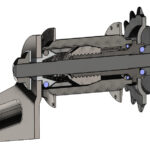Bicycle brakes are a critical component for safety and control, allowing riders to manage speed and stop effectively in various conditions. Modern bikes utilize a range of braking systems, each with its own set of advantages and applications. Understanding the different Types Of Bike Brakes is essential for cyclists to choose the right bike and maintain their equipment properly. This guide will explore the most common types of bike brakes found on modern bicycles, delve into their mechanisms, and touch upon some historical braking systems.
 The LIOS Bullet Rival disc AXS road bike is equipped with SRAM Rival hydraulic disc brakes
The LIOS Bullet Rival disc AXS road bike is equipped with SRAM Rival hydraulic disc brakes
Modern bicycles primarily use three main types of brakes: disc brakes, rim brakes, and V-brakes. Disc brakes have surged in popularity, especially on road and mountain bikes, due to their consistent performance and stopping power in diverse weather conditions. Rim brakes and V-brakes, while still common, are often found on more budget-friendly bikes, though some high-end road bikes still utilize rim brake technology.
Modern Bike Brake Types
Disc brakes, rim brakes, and V-brakes represent the most prevalent braking systems in contemporary cycling. Let’s examine each type in detail:
Disc Brakes
Disc brakes operate by clamping brake pads against a rotor (also called a disc), which is attached to the wheel hub. This system offers powerful and consistent braking, less affected by weather conditions compared to rim brakes. Disc brakes are now standard on most new road bikes, mountain bikes, and hybrid bikes.
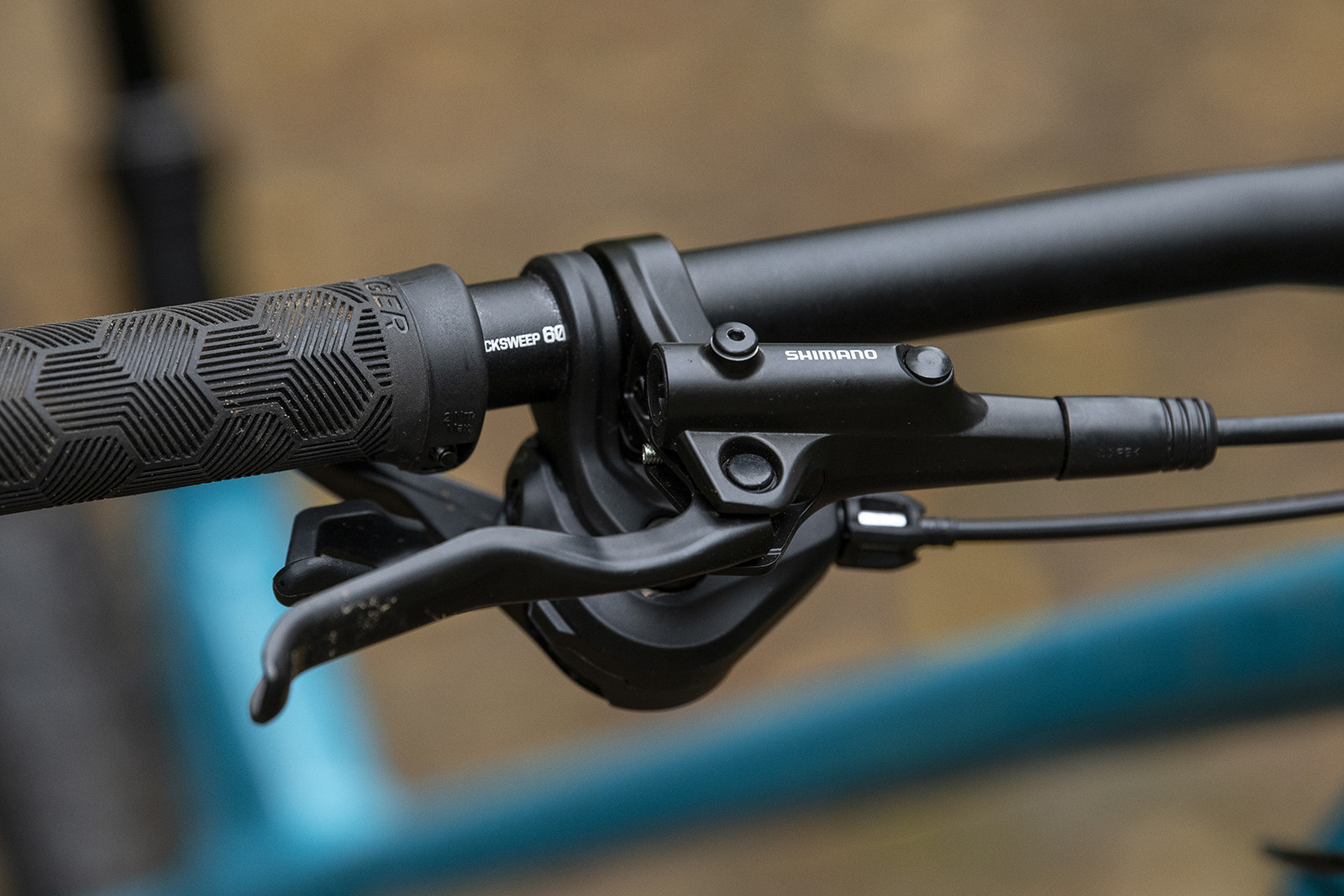 Shimano MT200 hydraulic disc brake levers on the Trek Roscoe 7 hardtail mountain bike
Shimano MT200 hydraulic disc brake levers on the Trek Roscoe 7 hardtail mountain bike
Hydraulic Disc Brakes: Hydraulic disc brakes use hydraulic fluid in a closed system to transmit force from the brake lever to the caliper. When the lever is squeezed, it pushes fluid through the brake hose, which in turn forces pistons in the caliper to press the brake pads against the rotor. Hydraulic systems offer superior modulation and require less maintenance compared to cable-operated systems, although bleeding the system may be necessary over time.
Cable (Mechanical) Disc Brakes: Mechanical disc brakes utilize a cable to actuate the brake caliper. Pulling the brake lever pulls a cable connected to the caliper, causing the pads to clamp onto the rotor. While less powerful and offering less modulation than hydraulic disc brakes due to cable friction and stretch, mechanical disc brakes are more affordable and often easier to repair in remote locations.
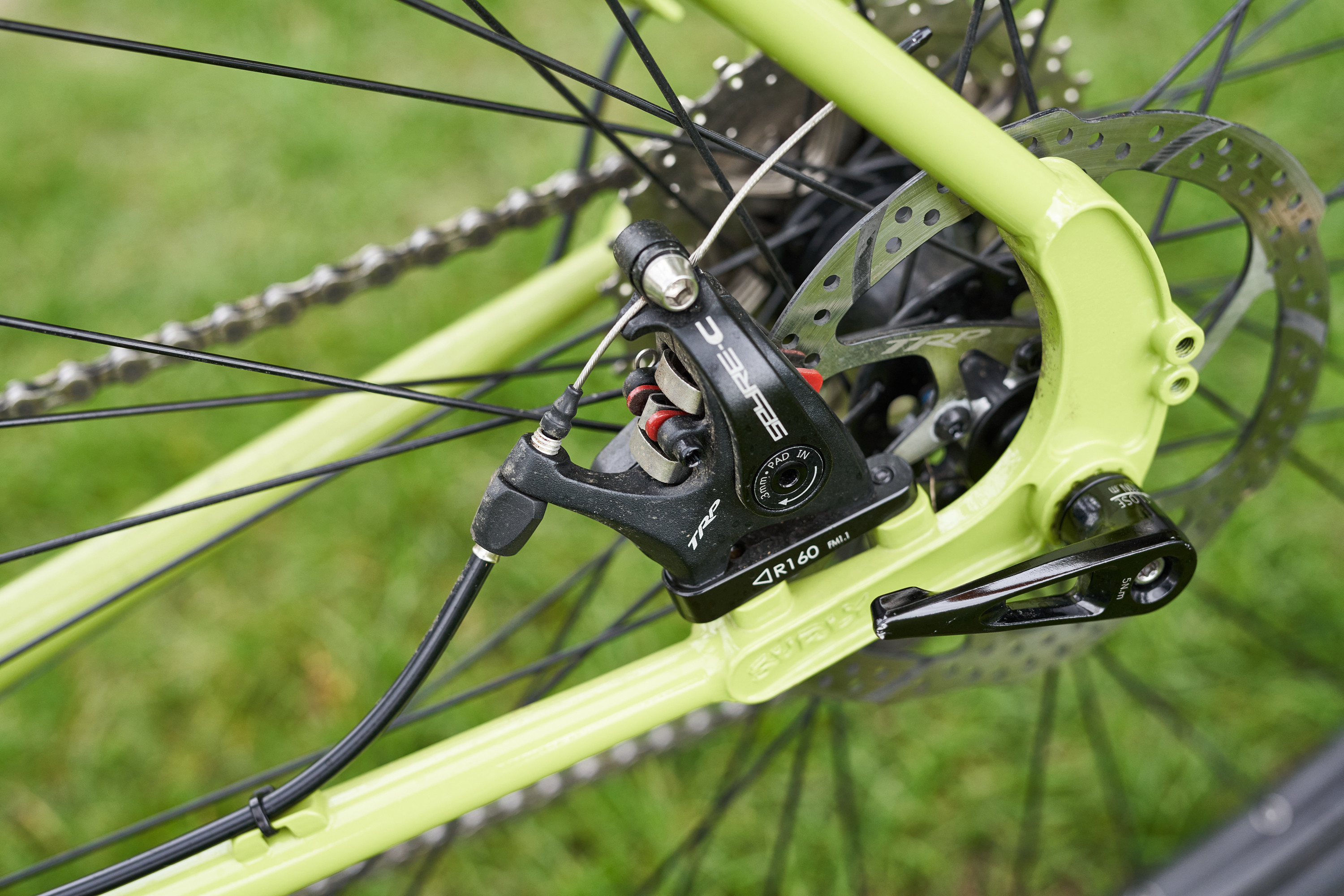 Surly Disc Trucker against an urban background
Surly Disc Trucker against an urban background
Rim Brakes
Rim brakes work by applying brake pads directly to the wheel rim. They were the dominant braking system for road bikes for many decades due to their lightweight design and adequate stopping power in dry conditions. However, their performance can significantly decrease in wet weather, especially on carbon rims.
Caliper Rim Brakes: Caliper brakes are mounted above the wheel and use arms that pivot to bring brake pads into contact with the rim. There are several variations of caliper brakes:
-
Single-pivot caliper brakes: These older designs have both arms pivoting around a central point. While simple, they are less powerful and harder to center than dual-pivot designs.
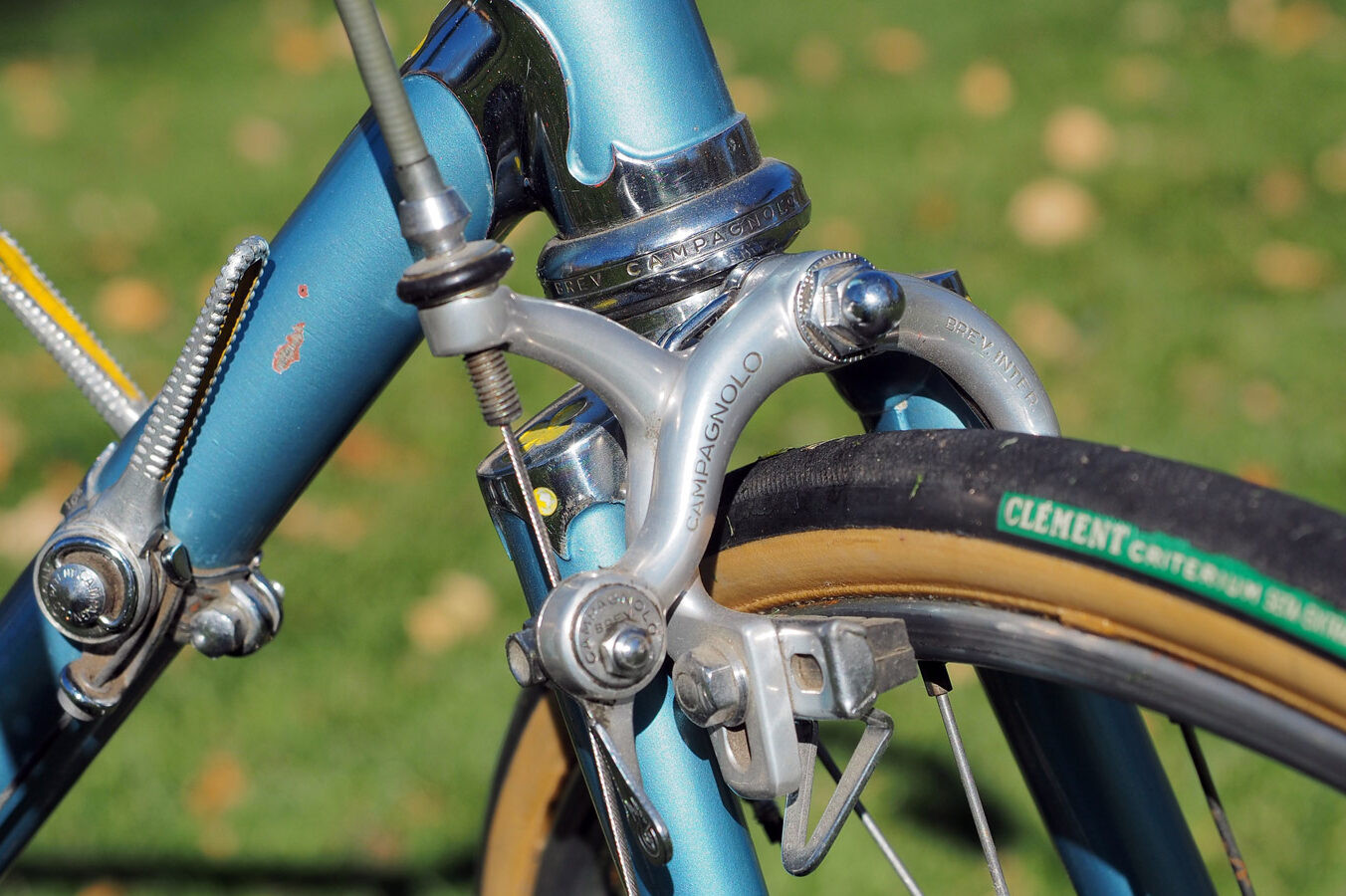 Campagnolo single-pivot brake calipers
Campagnolo single-pivot brake calipers -
Dual-pivot caliper brakes: Featuring two pivot points, these brakes offer increased mechanical advantage, resulting in more powerful and easily modulated braking. Dual-pivot brakes are a significant improvement over single-pivot designs and have been widely adopted on road bikes.
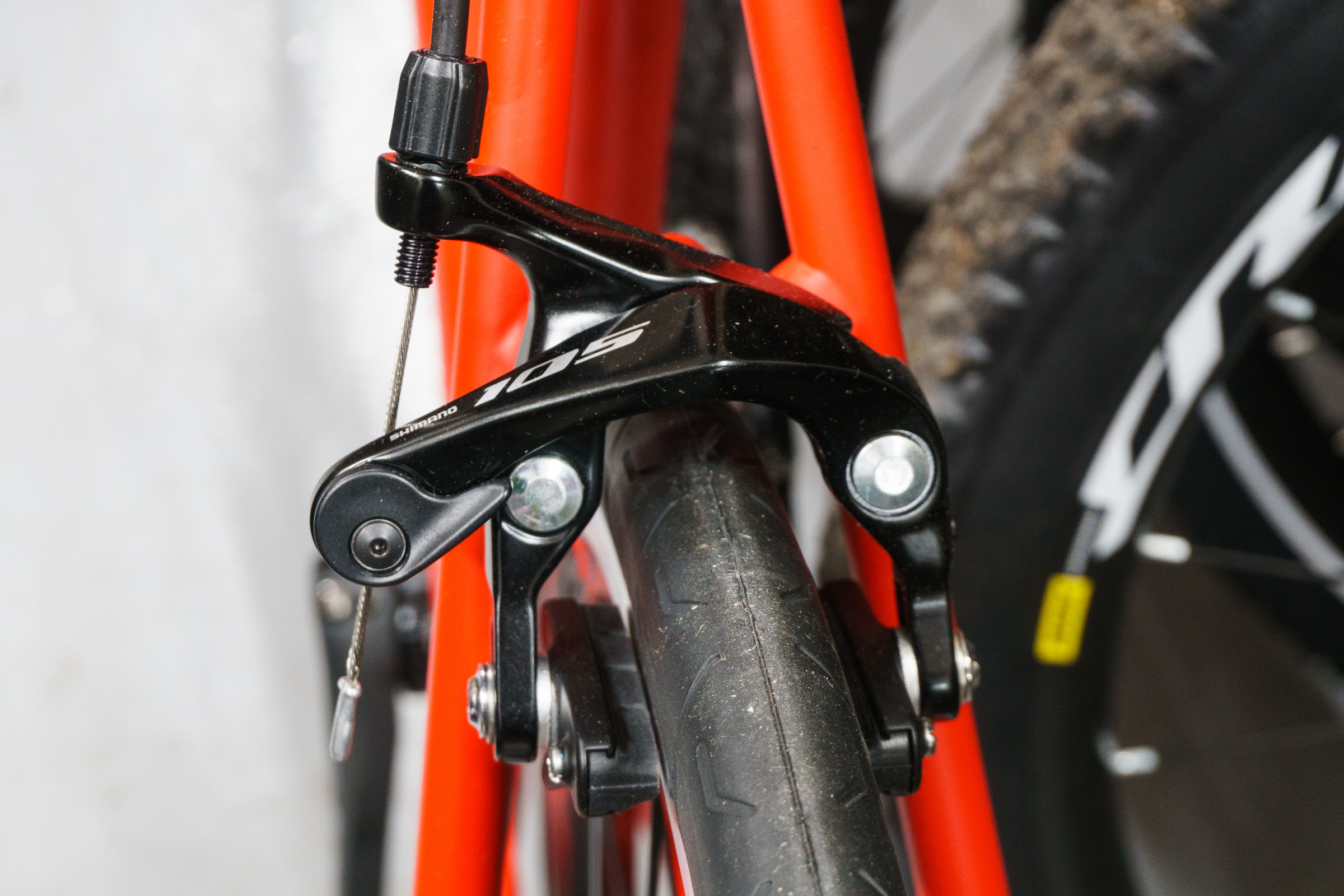 The brakes present a significant improvement over Ultegra.
The brakes present a significant improvement over Ultegra. -
Direct-mount caliper brakes: These modern rim brakes attach directly to the frame via integrated posts, enhancing braking power and potentially offering aerodynamic benefits. They are common on high-end road bikes with rim brakes.
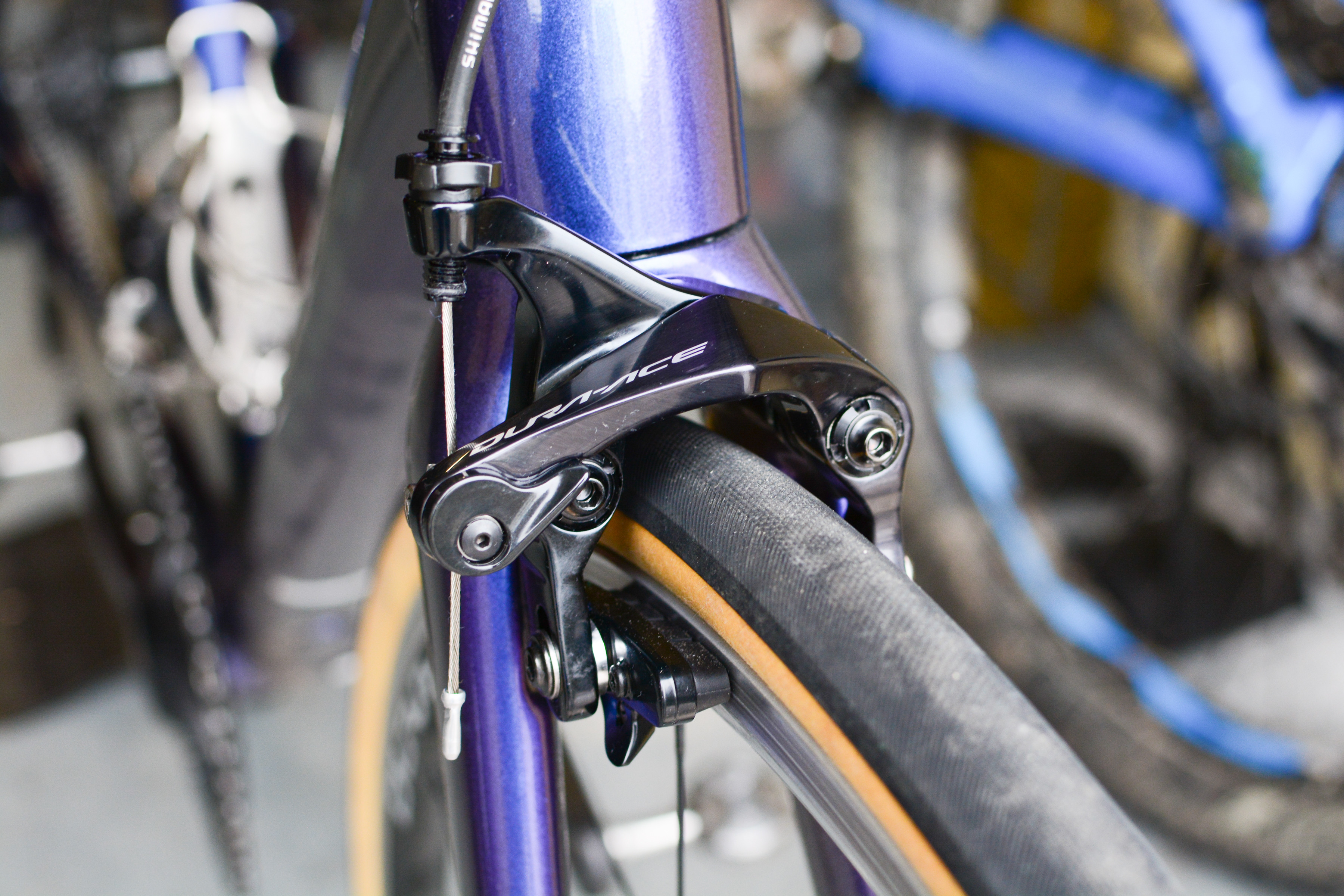 Front rim brake of road bike
Front rim brake of road bike -
Center-pull caliper brakes: Utilizing a straddle cable to actuate the brake arms, center-pull brakes provide excellent power and modulation and offer generous tire clearance. Though less common now, they are still favored by some for touring and randonneuring bikes.
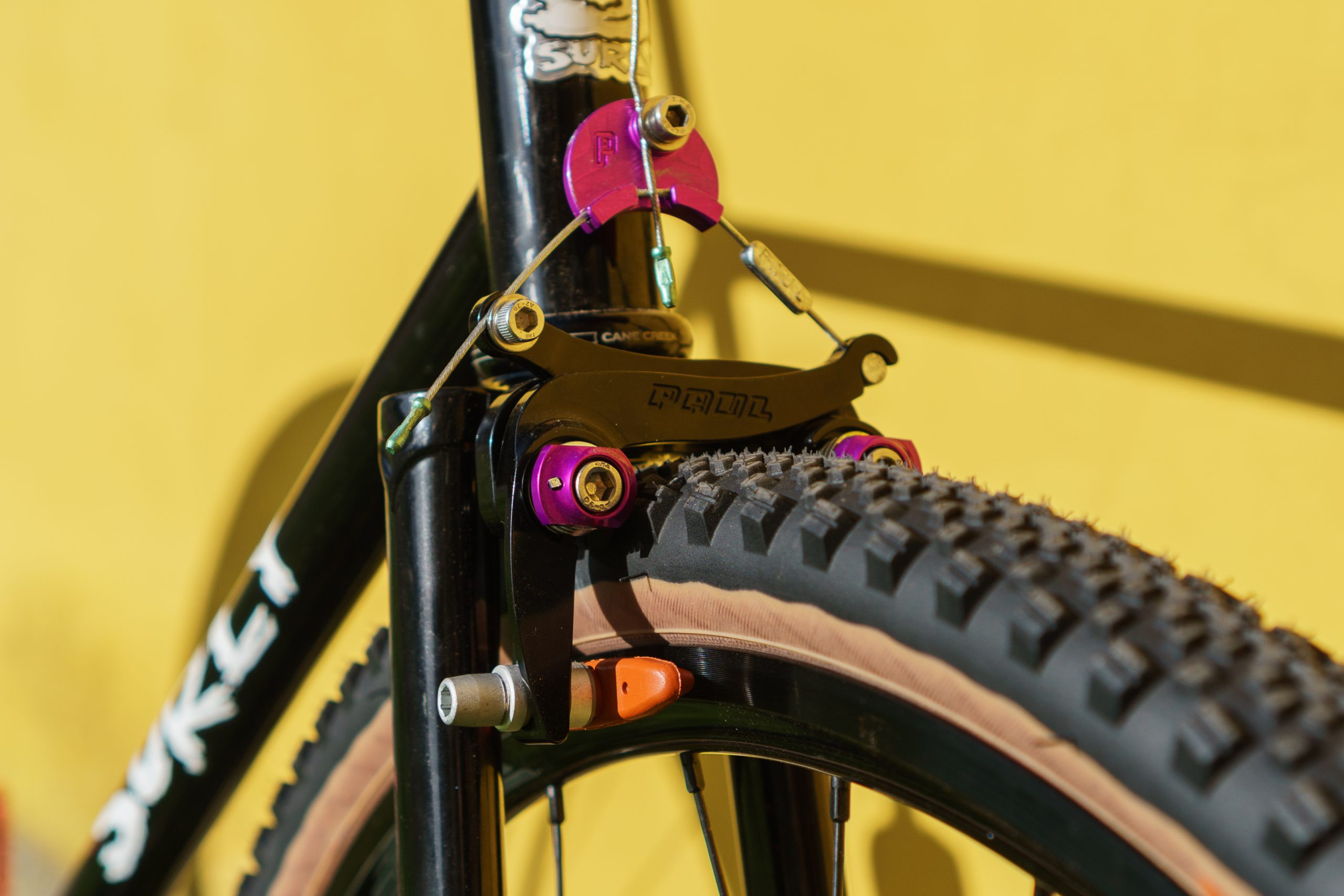 Paul Components Racer Medium brake
Paul Components Racer Medium brake
V-Brakes
V-brakes, also known as direct-pull cantilever brakes, are a type of rim brake known for their powerful braking and ease of maintenance. They are commonly found on commuter bikes, hybrid bikes, and older mountain bikes.
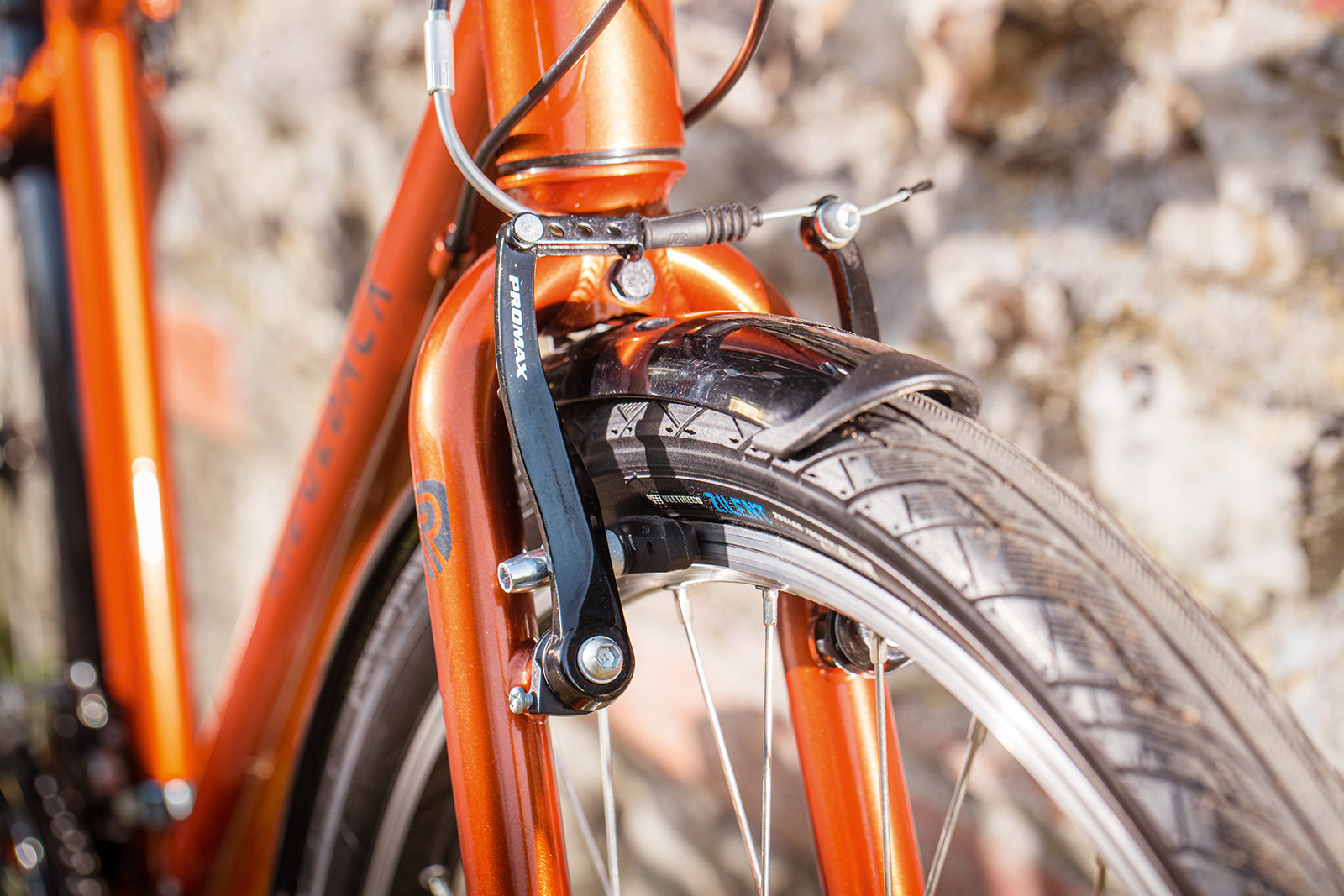 With the Ridgeback Speed commuter Ridgeback has opted for V-brakes
With the Ridgeback Speed commuter Ridgeback has opted for V-brakes
V-brakes are mounted on frame bosses and use a cable system where pulling the brake lever draws the two brake arms together, pressing the pads against the rim. They offer more power than traditional cantilever brakes and are relatively simple to adjust and maintain. However, they require specific brake levers with a longer cable pull ratio.
Anatomy of a Bike Brake
Regardless of the type, most bike brakes share common components:
-
Brake Lever: Mounted on the handlebars, the brake lever is the rider’s primary interface for controlling the brakes. Pulling the lever initiates the braking action. Road bikes often integrate brake levers with gear shifters, while flat-bar bikes typically have separate levers.
 Campagnolo Super Record EPS 12 speed shifter on BMC Teammachine SLR01 against a wall
Campagnolo Super Record EPS 12 speed shifter on BMC Teammachine SLR01 against a wall -
Cables or Hydraulic Lines: These transmit the force from the brake lever to the brake caliper. Cables are used in mechanical systems, while hydraulic lines are used in hydraulic systems, filled with fluid.
-
Caliper: The caliper houses the brake pads and pistons (in disc brakes) or arms (in rim brakes). It’s the component that applies pressure to the rotor or rim to slow the bike.
-
Rotor (Disc Brakes) or Rim (Rim Brakes): This is the braking surface. In disc brakes, it’s a separate disc attached to the hub. In rim brakes, it’s the wheel rim itself.
-
Brake Pads: These are consumable parts that create friction against the rotor or rim to slow the bike. They are made from various materials, each suited for different riding conditions and brake types.
How Bike Brakes Work: Creating Friction to Stop
Bike brakes work by converting kinetic energy into heat through friction. When you apply the brakes, the brake pads are pressed against a braking surface (rotor or rim). This friction slows down the rotation of the wheel, and consequently, the bike.
-
Disc Brakes Mechanism: In disc brakes, the caliper is mounted near the wheel axle. When the brake lever is activated, pistons inside the caliper push the brake pads against the rotor. The clamping force and friction between the pads and rotor generate heat, slowing the wheel’s rotation. Disc brake rotors can vary in size, with larger rotors providing more stopping power, especially beneficial for downhill mountain biking or heavier loads.
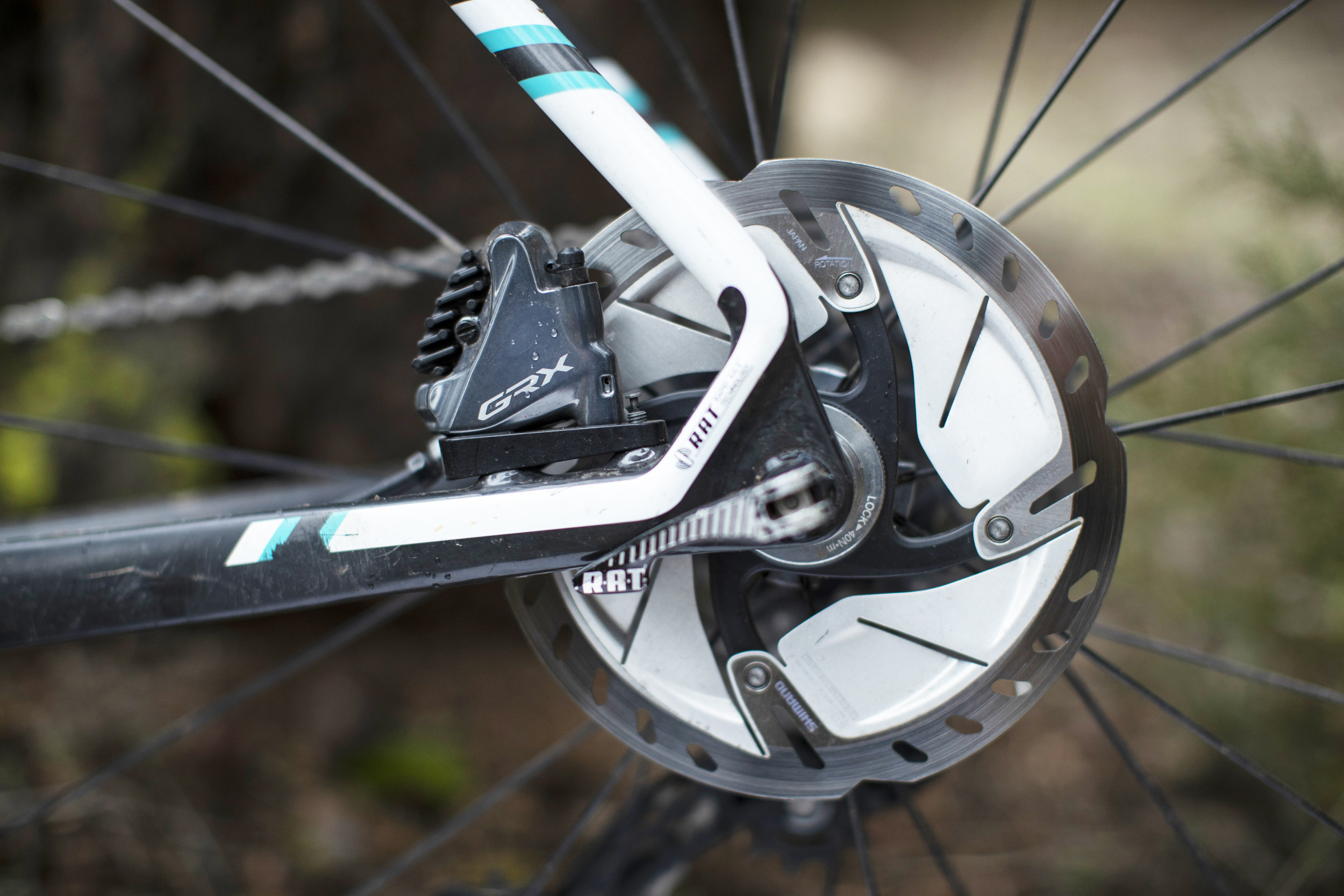 Shimano GRX disc brake caliper and disc mounted to rear of bike frame with
Shimano GRX disc brake caliper and disc mounted to rear of bike frame with -
Rim Brakes Mechanism: Rim brakes use calipers mounted to the frame or fork. When the brake lever is pulled, the caliper arms move, bringing the brake pads into contact with the wheel rim. The friction between the pads and the rim slows the wheel. Rim brakes rely on the rim surface for braking, which can be less effective in wet conditions, especially with carbon rims.
A Look at Historical Bike Brake Systems
While modern bikes are dominated by disc, rim, and V-brakes, cycling history is rich with diverse and sometimes quirky braking systems. Here are some examples of brakes from the past:
-
Drum Brakes: Enclosed within the wheel hub, drum brakes are weather-resistant but heavy and prone to overheating. They are still found on some Dutch bikes and older tandems.
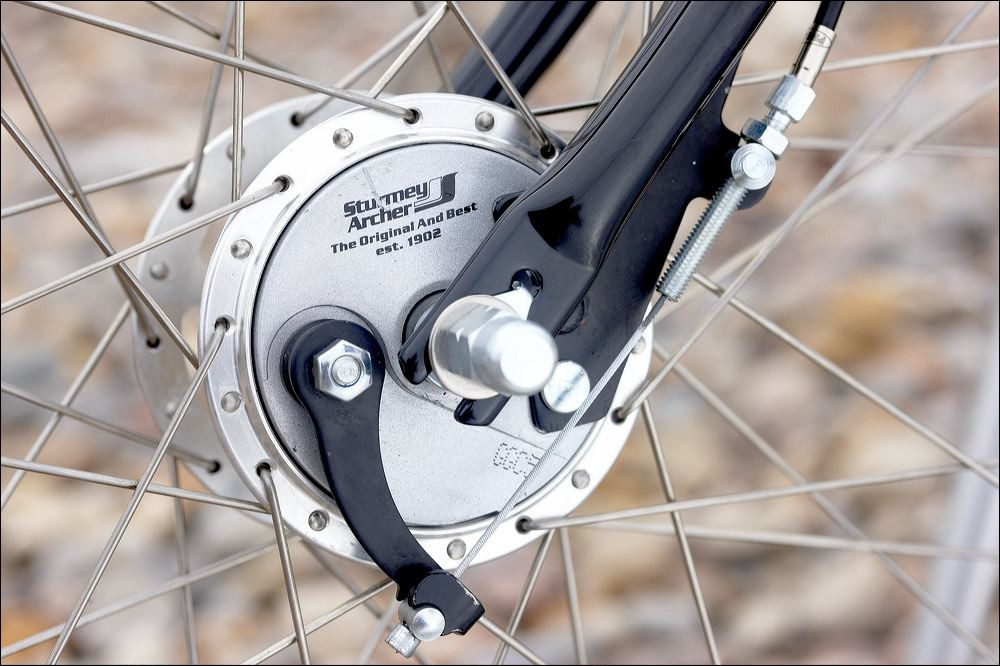 Sturmey drum brakes are not great stoppers, but look cool
Sturmey drum brakes are not great stoppers, but look cool -
Coaster Brakes: Primarily on rear wheels, coaster brakes activate by pedaling backward. They are weatherproof and low-maintenance but heavy and easy to lock up, causing skidding. Common on Dutch bikes.
-
Cantilever Brakes: An older type of rim brake with calipers mounted on frame bosses and connected by a straddle wire. Lightweight and offering wide clearance, but can be tricky to set up properly. Once popular on cyclocross bikes.
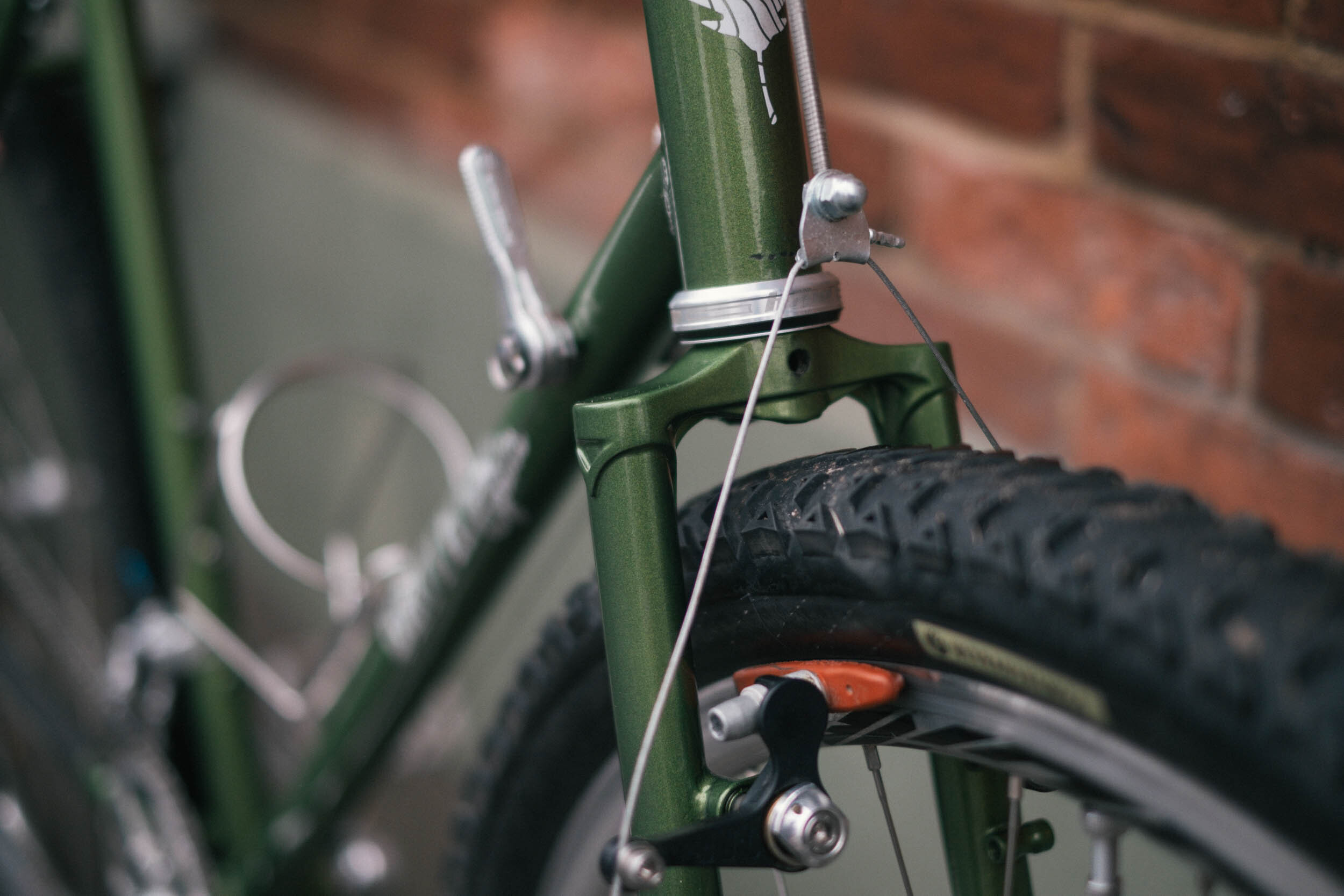 Brother Cycles Mr Wooden against a brick background
Brother Cycles Mr Wooden against a brick background -
U-brakes: Similar to cantilever brakes, mounted to frame bosses. Faced adjustment and performance issues. Still used on BMX bikes due to their low profile.
 Dia Compe U-brake
Dia Compe U-brake -
Hydraulic Rim Brakes: Use hydraulic cylinders to push pads against the rim. Magura hydraulic rim brakes are a notable example, primarily for flat-bar bikes. Less efficient than disc brakes and proprietary parts.
-
Roller Cam Brakes: A complex design using a triangular cam and rollers to actuate brake arms. Rarely seen, but an interesting example of brake evolution.
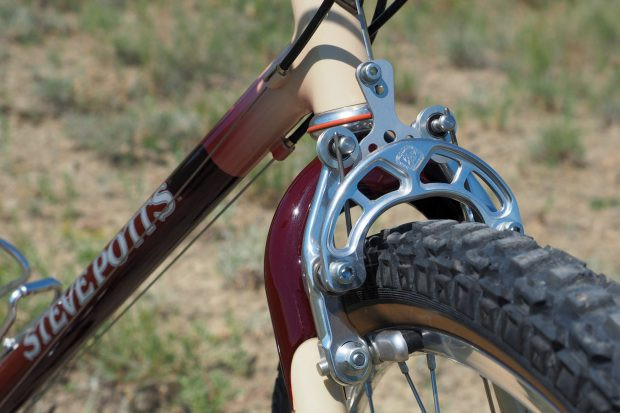 Steve Potts was instrumental in the development of WTB
Steve Potts was instrumental in the development of WTB -
Rod Brakes: Used steel rods instead of cables to activate braced calipers against the inside of the rim. Found on very old bicycles.
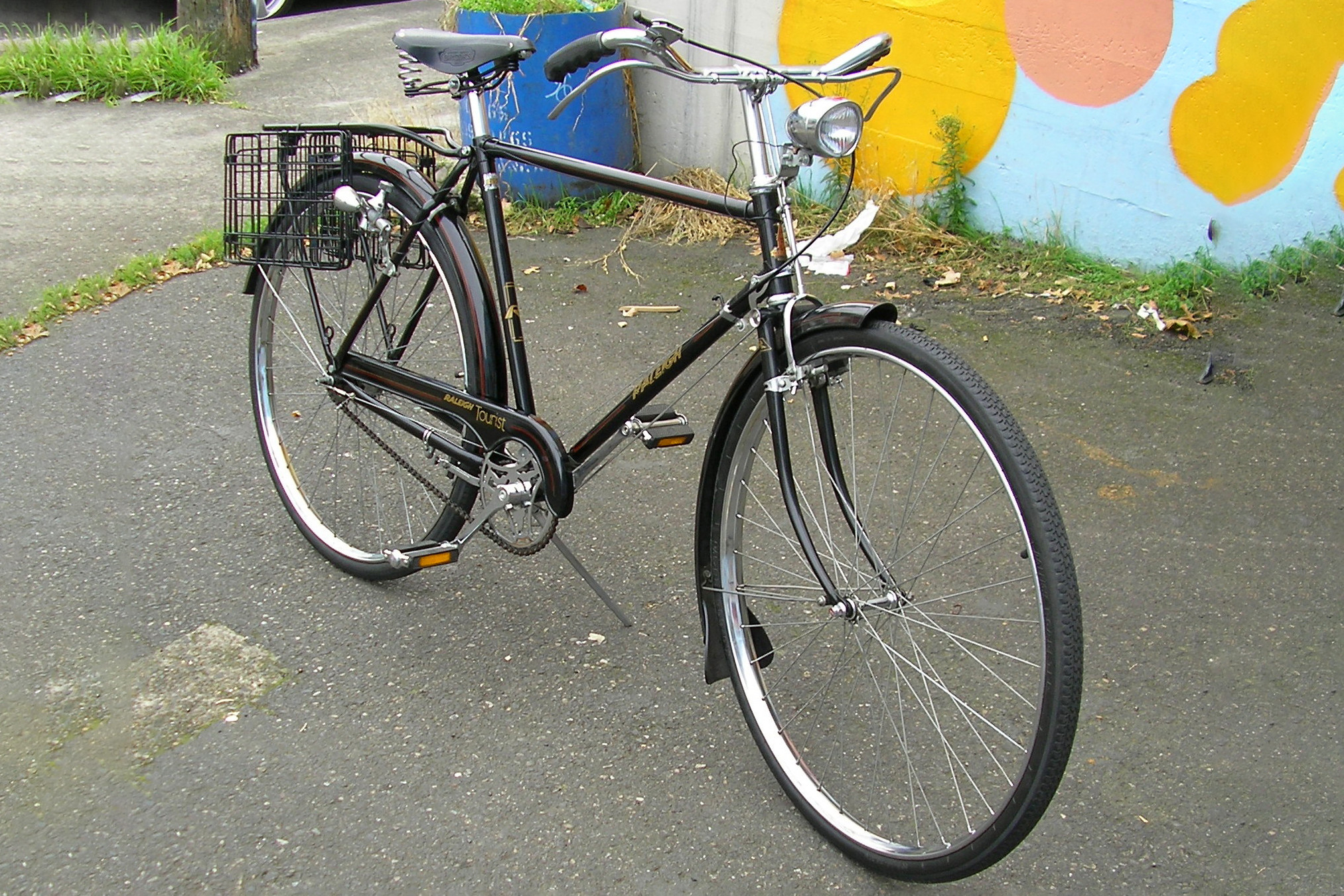 Raleigh bike with rod brakes
Raleigh bike with rod brakes -
Spoon Brakes: Extremely rudimentary brakes using a spoon-shaped lever pressed against the tire’s outer diameter. Used on penny-farthings, now obsolete.
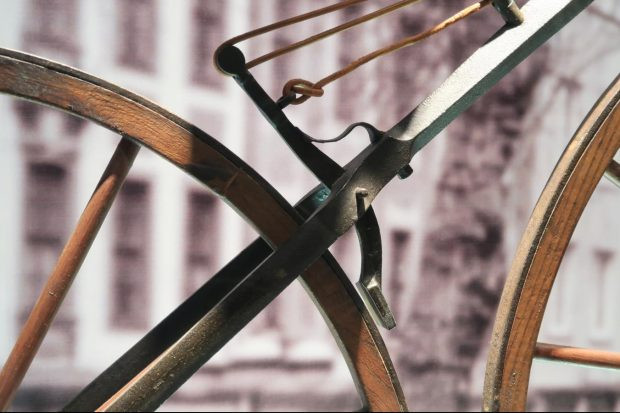 A metal spoon brake pressed against the rear wheel to bring it to a stop, or at least slow it down
A metal spoon brake pressed against the rear wheel to bring it to a stop, or at least slow it down -
Fixed-Gear Braking: While not a brake system in itself, fixed-gear bikes can be slowed by resisting the pedals. Not recommended as a primary braking method and not road-legal in some regions.
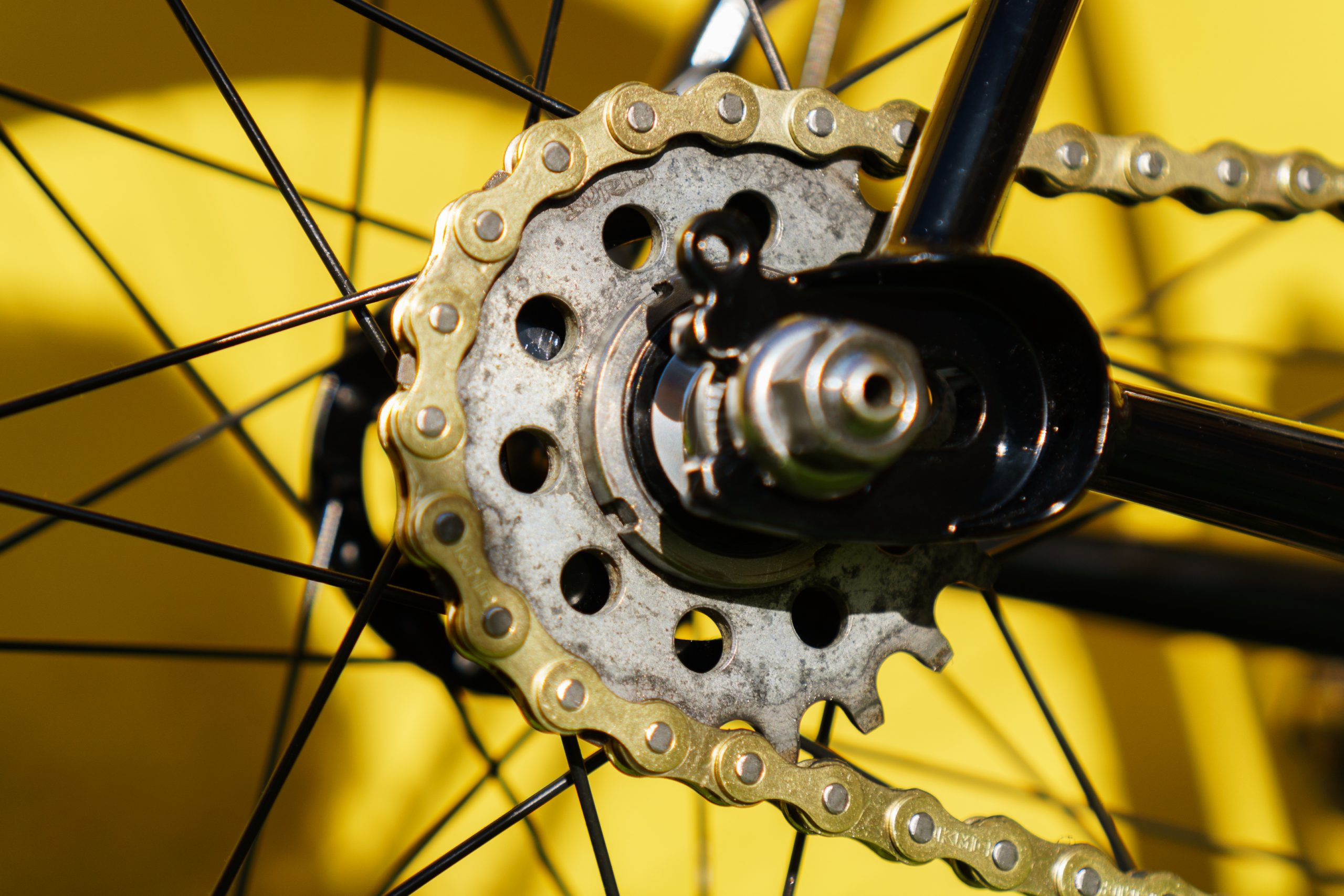 Surly Steamroller Gravel Bike-3
Surly Steamroller Gravel Bike-3
Conclusion: Choosing the Right Bike Brake Type
Selecting the appropriate type of bike brakes depends on various factors, including the type of cycling you intend to do, your budget, and desired performance characteristics. Disc brakes offer superior performance, especially in varied conditions, making them ideal for mountain biking, road cycling, and demanding commutes. Rim brakes remain a viable option for road cycling, particularly for riders prioritizing lightweight and simplicity, and V-brakes are a robust and cost-effective choice for commuter and hybrid bikes. Understanding the nuances of each brake type empowers cyclists to make informed decisions and ensure safe and enjoyable riding experiences.


